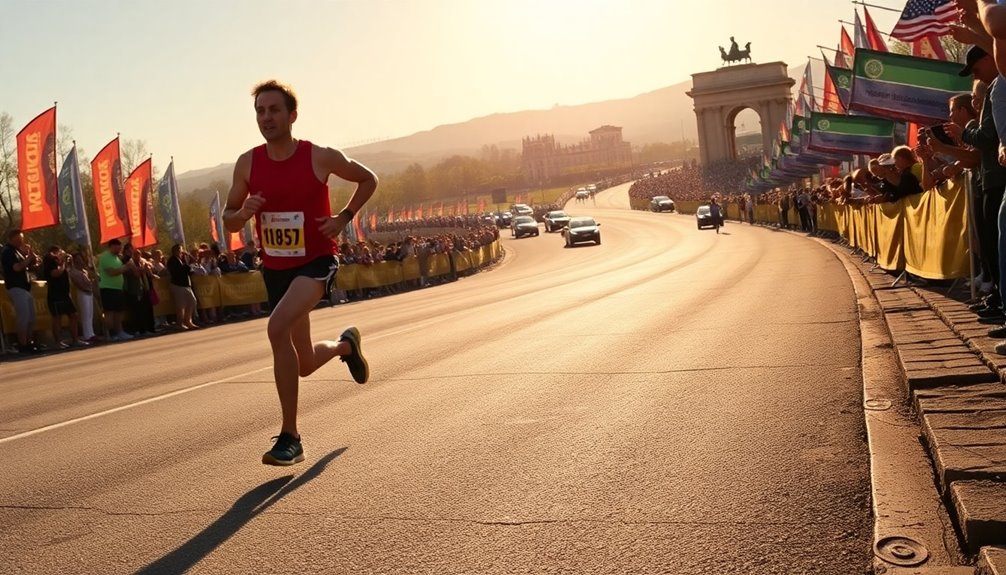The marathon distance of 26.2 miles actually began at the 1908 London Olympics, where the course was extended for royal spectators. Originally about 25 miles, the change aimed to enhance the event's grandeur and dramatic finish, captivating onlookers. This alteration gained popularity, leading to the standardization of the distance by 1921. So, while it's often linked to ancient Greece, the real reason stems from a royal preference in London. Discover what this means for today's marathons!
Key Takeaways
- The marathon distance was altered to 26.2 miles during the 1908 London Olympics for royal preferences and a more dramatic finish.
- The original marathon distance was around 25 miles, commemorating Pheidippides' historic run from Marathon to Athens.
- The 1908 race set a precedent, leading to the widespread adoption of the 26.2-mile distance by 1921.
- Standardizing the marathon distance allows uniformity and consistency across global marathon events.
- The 26.2-mile distance has become an iconic benchmark, promoting inclusivity and pride within the running community.

The marathon distance of 26.2 miles, a standard that runners around the world now embrace, has a fascinating history. While many might assume it harks back solely to ancient Greece and the legendary run of Pheidippides, the truth is more nuanced. In fact, this distance was largely influenced by an unexpected event during the 1908 London Olympics.
Originally, the marathon distance was about 25 miles, commemorating Pheidippides' fabled run from Marathon to Athens in 490 B.C. However, when the 1908 London Olympics rolled around, the race organizers made a significant change to cater to royal preferences. They decided to start the race at Windsor Castle, making it a grand affair that would culminate in a dramatic finish right in front of the royal box at White City Stadium. This alteration extended the course to 26.2 miles, a distance that ultimately became iconic.
Once the 1908 race concluded, the 26.2-mile distance quickly gained traction among runners and event organizers. It became clear that this seemingly arbitrary distance resonated with athletes and spectators alike. By 1921, the 26.2-mile distance was standardized, solidifying its status as the marathon distance in races around the world.
Today, you'll find that over 1,100 marathons are held annually in the United States, all adhering to this standardized distance. This robust adherence to the 26.2-mile benchmark has allowed for a uniform experience across global marathons, making it easier for runners to train and participate in events anywhere.
Whether you're running in Boston, New York, or a local charity event, you can count on the fact that you're tackling the same marathon distance as everyone else.
Conclusion
So, the next time you lace up your running shoes for a marathon, remember that the iconic 26.2 miles isn't just a nod to ancient Greece. It's rooted in a blend of history, sporting events, and a bit of whimsy. Embrace the challenge, knowing that this distance has evolved through unique circumstances, making your run all the more special. Whether you're chasing a personal best or just crossing the finish line, you're part of a fascinating story.









